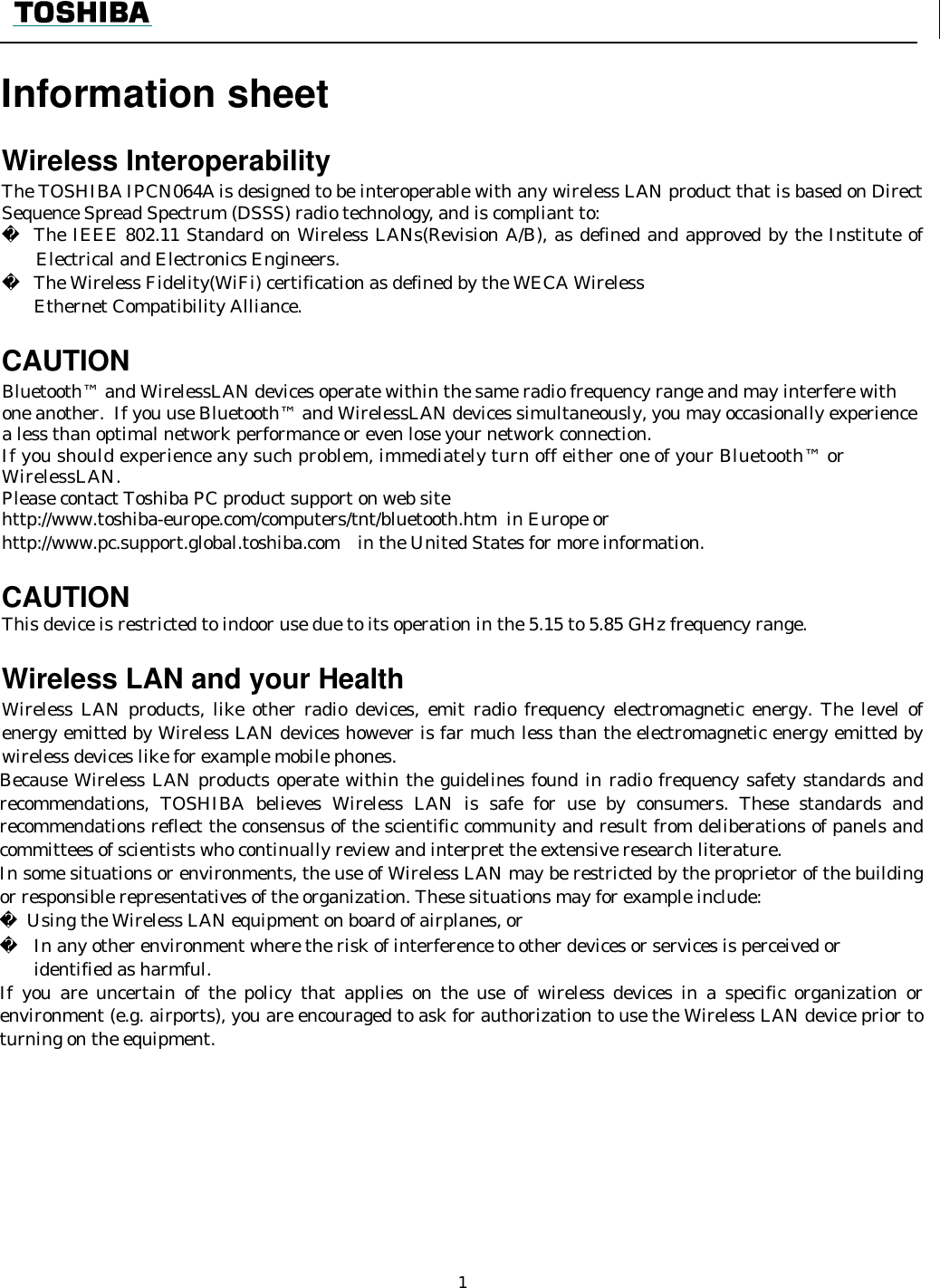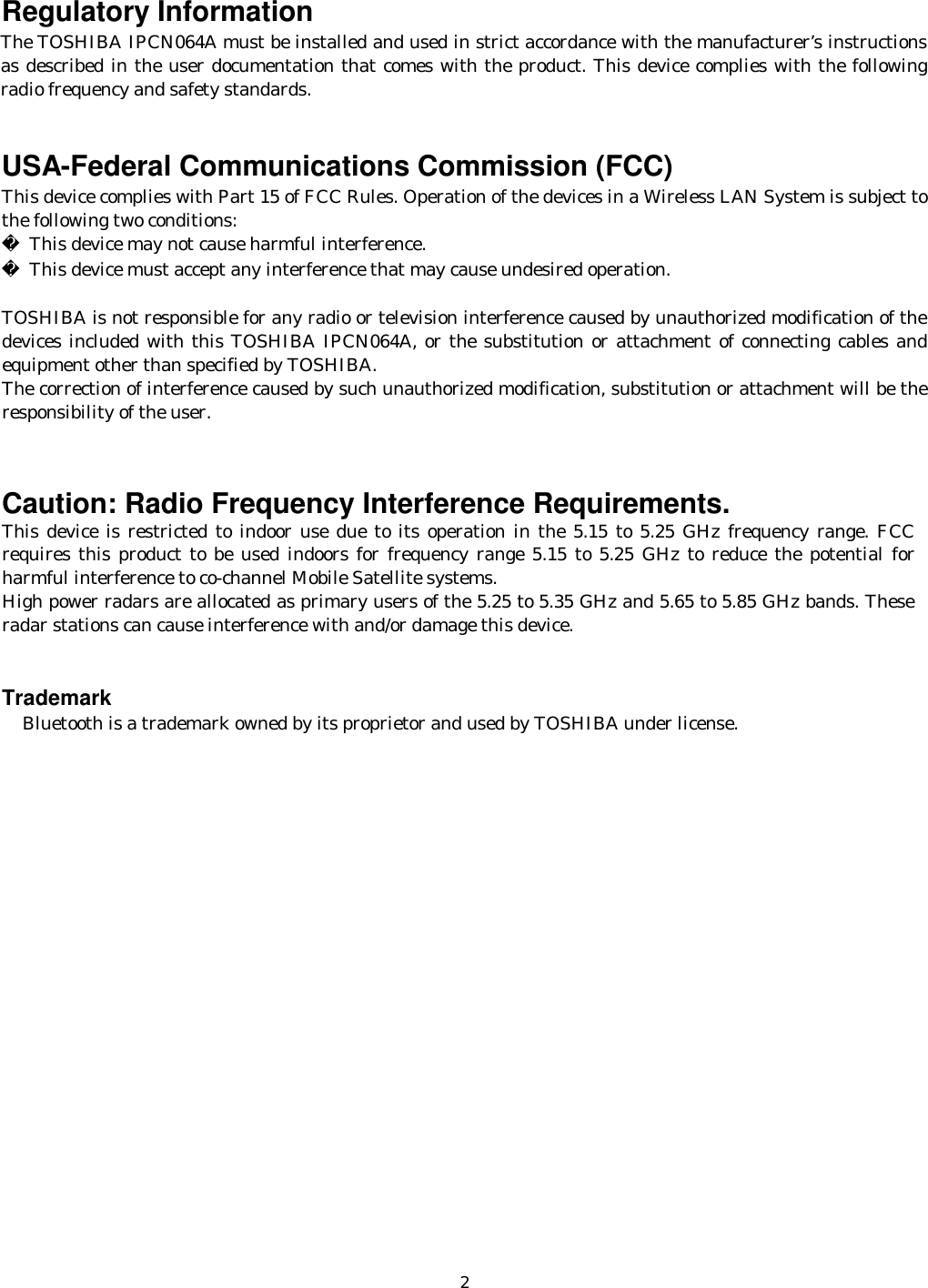Dynabook UZPCN064WL 802.11a Access Point User Manual user
Toshiba Corporation 802.11a Access Point user
Dynabook >
Contents
- 1. User Manual
- 2. FCC compliance information
- 3. FCC compliance information to user
FCC compliance information to user

